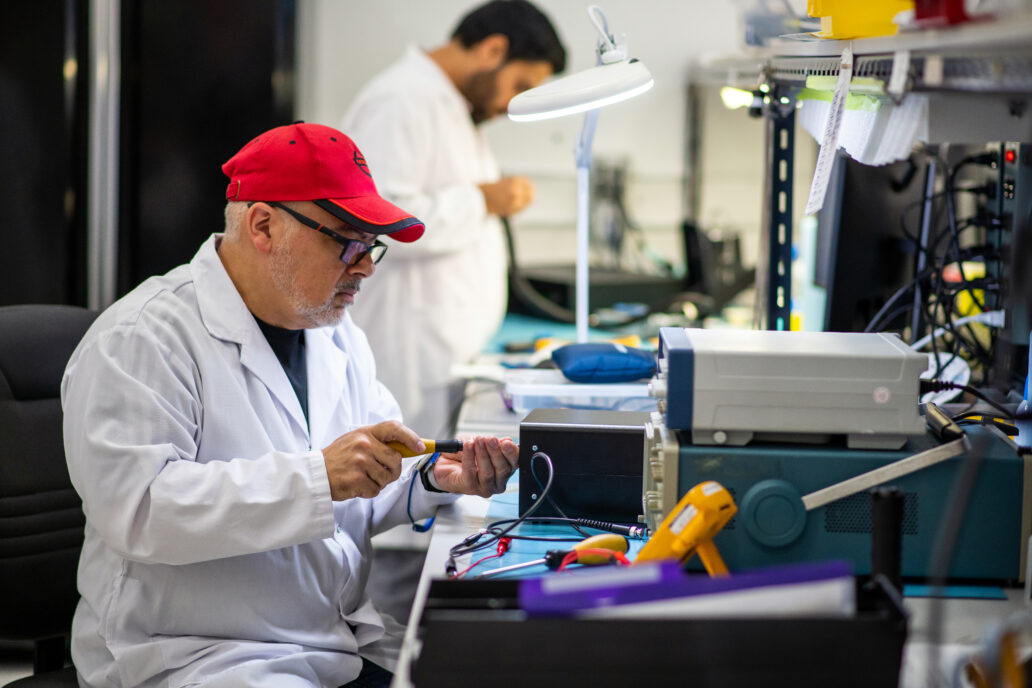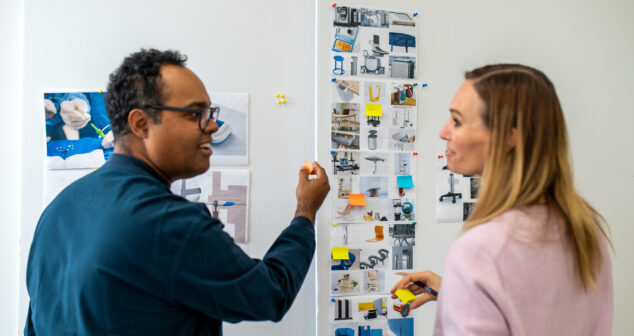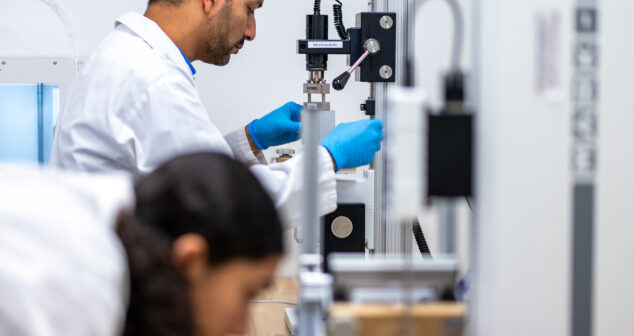
New Product Introduction
From Innovation to Value Creation
Aligning Market Validation and Financial Opportunity
For MedTech startups, developing an innovative device is only part of the journey. The real challenge is validating a scalable business around it. Innovation creates potential, validation creates value, and true value emerges when real-world data and market signals confirm that you have the right product and a de-risked path to realization.
Investors take notice when technical progress begins to translate into enterprise value. The initial commercial launch, each refinement and market assessment, start to feed into valuation, proving not just that device works, but that the company can deliver it reliably and at scale.
At StarFish, we help innovators move from product validation to value creation. Our Pathfinder process aligns commercialization, development, manufacturing, and regulatory teams around market and clinical signals by ensuring that each product is impactful, scalable, and built to meet real market needs. This approach guides clients toward that critical peak valuation window where market traction, operational excellence align, creating maximum optionality for growth, acquisition, or strategic partnership.
Strategic Alignment That Builds Momentum
Commercial success in MedTech depends on timing. Knowing when to pivot from learning to scaling, and when alignment across teams will create the greatest impact. Invest too early, and capital goes into redesigns, process development, and systems that outpace what the market has proven. Wait too long, and opportunity fades as credibility erodes and momentum stalls.
At StarFish, we help clients identify that optimal outcome. Identifying when validation signals are strong, risks are understood, and scaling begins to multiply value rather than consume it. Deliberately aligning all disciplines around that timing ensures every step contributes to technical, clinical, and commercial progress.
This alignment transforms iteration into acceleration. By synchronizing market learning with operational execution, we help companies turn early traction into sustained momentum supported by data that investors seek out as evidence of a de-risked growth path.
The outcome is a company positioned for capital efficiency, valuation growth, and strategic flexibility that is ready to expand, partner, or exit from a position of strength.
A Commercialization Path That Builds Valuation Through Validation
Your initial commercial launch isn’t just an operational milestone, it’s an inflection point where your market thesis is tested and your valuation story begins to gain momentum. Success depends on launching the right product, at the right scale, with the right feedback systems in place to validate product–market fit, confirm clinical relevance, and build investor confidence.
At StarFish, we help companies design their initial market entry as a controlled validation launch. This launch is deliberately structured to confirm the business case while preserving capital and optionality. After launch, we work closely with clients to interpret market and clinical feedback, refining both product and strategy to align with real-world signals. This intentional refinement creates a more de-risked, credible version of the business, one that strengthens positioning and sets the stage for optimal financial outcomes.
Through our Pathfinder process, StarFish helps companies transform early market traction into credible commercial readiness, producing evidence of scalability, operational resilience, and market fit that investors equate with reduced risk and higher value.
This deliberate approach builds peak valuation, proving the company’s path to scale and establishing the commercial viability that drives strategic interest and investment momentum. Our clients are able to enter these strategic discussions, whether they are for investment, acquisition, or partnership, from a position of strength.
What’s at Stake: Valuation Milestones
Concept Validation
→ Technical derisking
Demonstrate feasibility, functionality, and early clinical or technical credibility to convert innovation into tangible evidence and build confidence for continued investment.
Validated Prototype
→ Market Readiness
Confirm usability, reliability, and initial clinical outcomes to signal progress toward commercial viability and increase investor confidence.
Initial Market Entry
→ Strategic Validation Launch
Test the market thesis and collect early user and clinical feedback to confirm demand, align product–market fit, and reduce perceived commercial risk.
Refined Product
→ Commercial Readiness
Integrate feedback, strengthen quality systems, and demonstrate manufacturing and supply reliability to show scalability and operational control and establish the foundation for strategic growth.
Optimal Financial Exit
→ Strategic Outcome
Achieve clear evidence of commercial viability and readiness to scale to position the company for expansion, acquisition, or strategic partnership from a position of strength.
Commercialization Across a Range of MedTech Segments
Every MedTech segment presents unique pathways to commercialization that are shaped by clinical workflows, regulatory expectations, and user environments. From connected health and home-based care to AI-enabled diagnostics and combination therapies, the bar for integration, reliability, and compliance has never been higher. Success now depends on more than building functional devices, it’s about demonstrating safety, usability, and scalability in real-world contexts that investors and regulators trust.
At StarFish, we’ve guided a wide range of MedTech innovations from prototypes to commercial readiness, helping our clients navigate the distinct challenges of each category. Our cross-disciplinary teams anticipate integration and quality risks early, aligning design intent, manufacturing strategy, and regulatory pathways to create products that prove both clinical impact and commercial potential. We bring that experience to a wide range of technologies:
These aren’t just products, they’re clinical proofs, regulatory milestones, and valuation drivers. Through our Pathfinder process, StarFish helps companies commercialize across this spectrum with clarity, compliance, and credibility, turning category-specific complexity into strategic advantage.
The StarFish Advantage
Every decision between validation and scale shapes the company’s valuation story.
At StarFish, we bring structure, evidence, and discipline to that journey, helping MedTech founders preserve capital, strengthen credibility, and build enterprise value with intention.
Our Pathfinder process combines Lean Startup discipline with compliant manufacturing expertise to guide companies through the proof points investors care most about:

Evidence Over Volume
Each build is designed to generate meaningful data, validate product–market fit, and de-risk the next stage of growth.

Milestone Alignment
Deliverables are structured to transform technical progress into valuation inflection points and strategic credibility.

Capital Efficiency by Design
Lean principles tailored for MedTech ensure focused experimentation, preserving equity, and optionality for future rounds or strategic exits.

Resilient Strategy
Cross-border production capabilities in Canada and the U.S. provide flexibility, mitigate trade and supply risk, and support long-term scalability.

Credibility Built In
Traceability, compliance, and quality systems are embedded from the outset, of your program turning due diligence from a hurdle into a differentiator.
Trusted by MedTech Leaders

Matt Mitcho
Founder, CEOGemelli Biotech“As we worked through the project, it was not only an engineering firm developing an instrument, but it was a consultancy, as well. That allowed us to do it properly to make sure that the CLIA-certified laboratory was happy with the LDT that was developed at the lab. We also envision these instruments going through 510(k) approval to be sold to external laboratories, academic institutions, or large GI practices, and we know that StarFish has the capabilities to help us through that journey.”

Clark E. Tedford
President and CEOLumiThera"As we moved forward, we recognized that our design house didn’t have the later-stage development quality and manufacturing capabilities required for a medical device. We needed to find a partner who could take us to the next stage of commercialization. StarFish Medical could put the final touches around the instrument and create a manufacturing piece as well."
Let’s Build Credibility Together
Your funding, partnership, or acquisition opportunity won’t rely solely on what you’ve built, it will hinge on the evidence that your company can execute and scale in the market. Investors and acquirers look for proof of commercial discipline. They are looking for validated markets, scalable systems, and a de-risked pathway to accretive revenue growth.
At StarFish, we help MedTech innovators build that proof deliberately, turning evidence into valuation, and commercialization into a position of strength.
Ready to explore how New Product Introduction / NPI services can enhance your product development?
Explore Our Other Services
Related Resources

From how much of your body is actually bacterial to how fast microbes can multiply, these facts are designed to stick with you long after the party ends.

In medical device development, verification is both a safeguard and a stress test, not just for the product, but for the process.

In the world of medical device development, requirements are often treated as a regulatory tax, essentially documentation created solely to satisfy a compliance need.